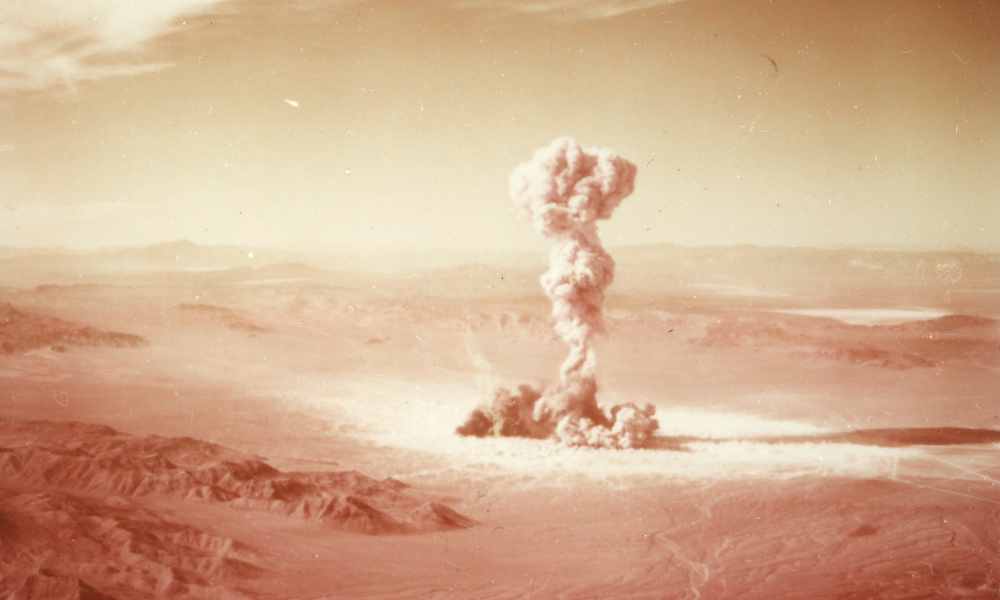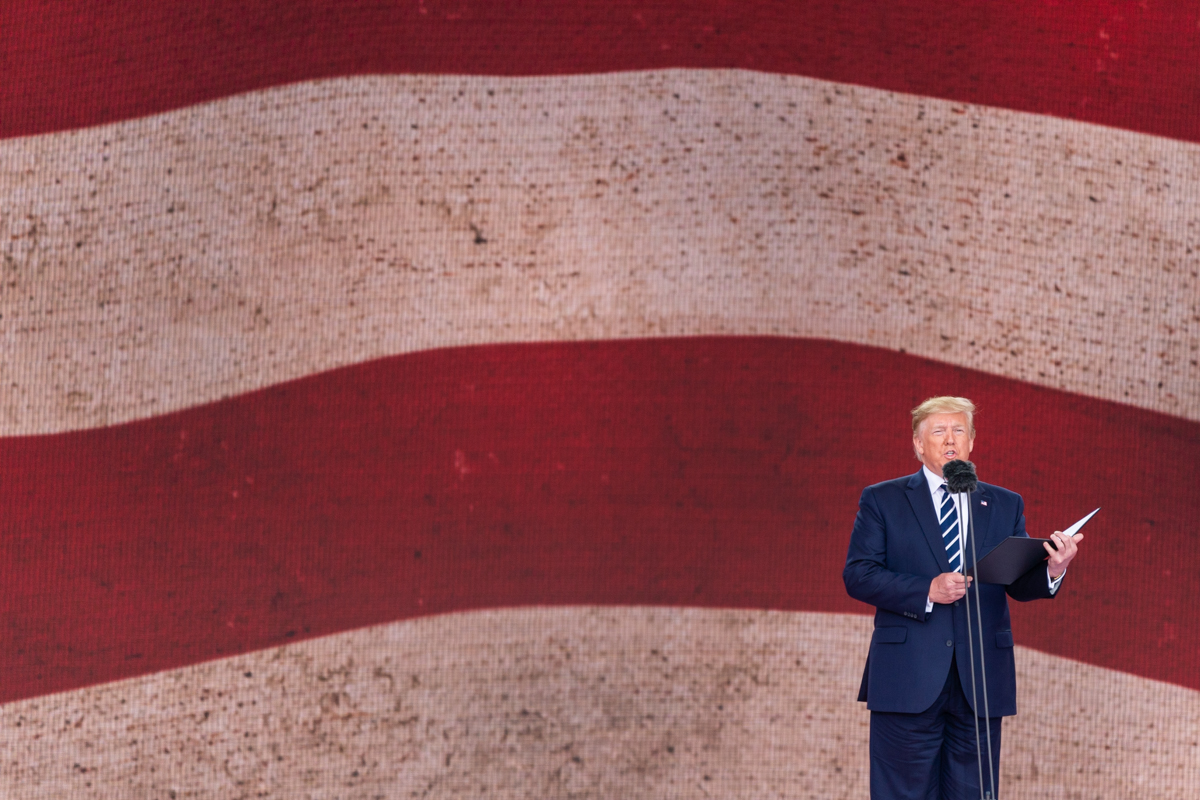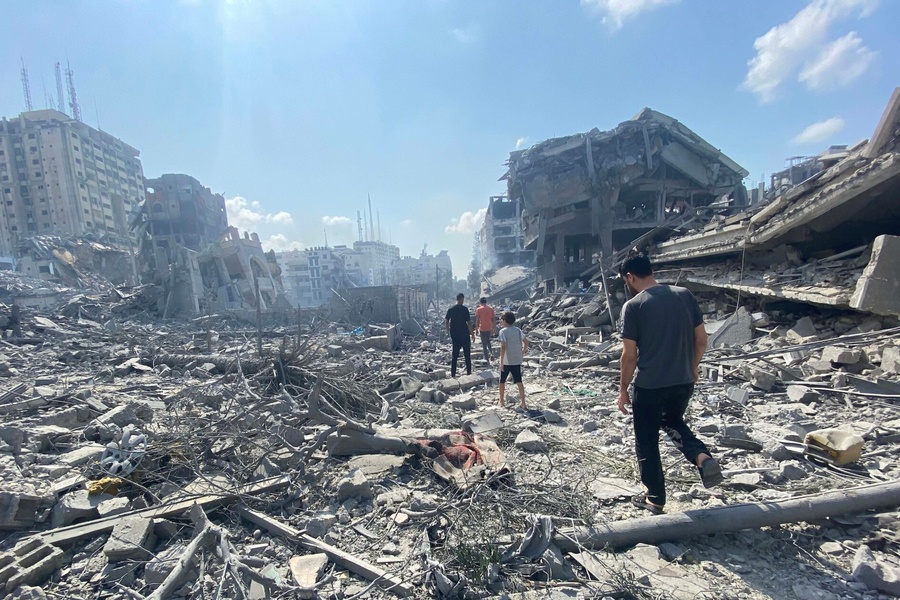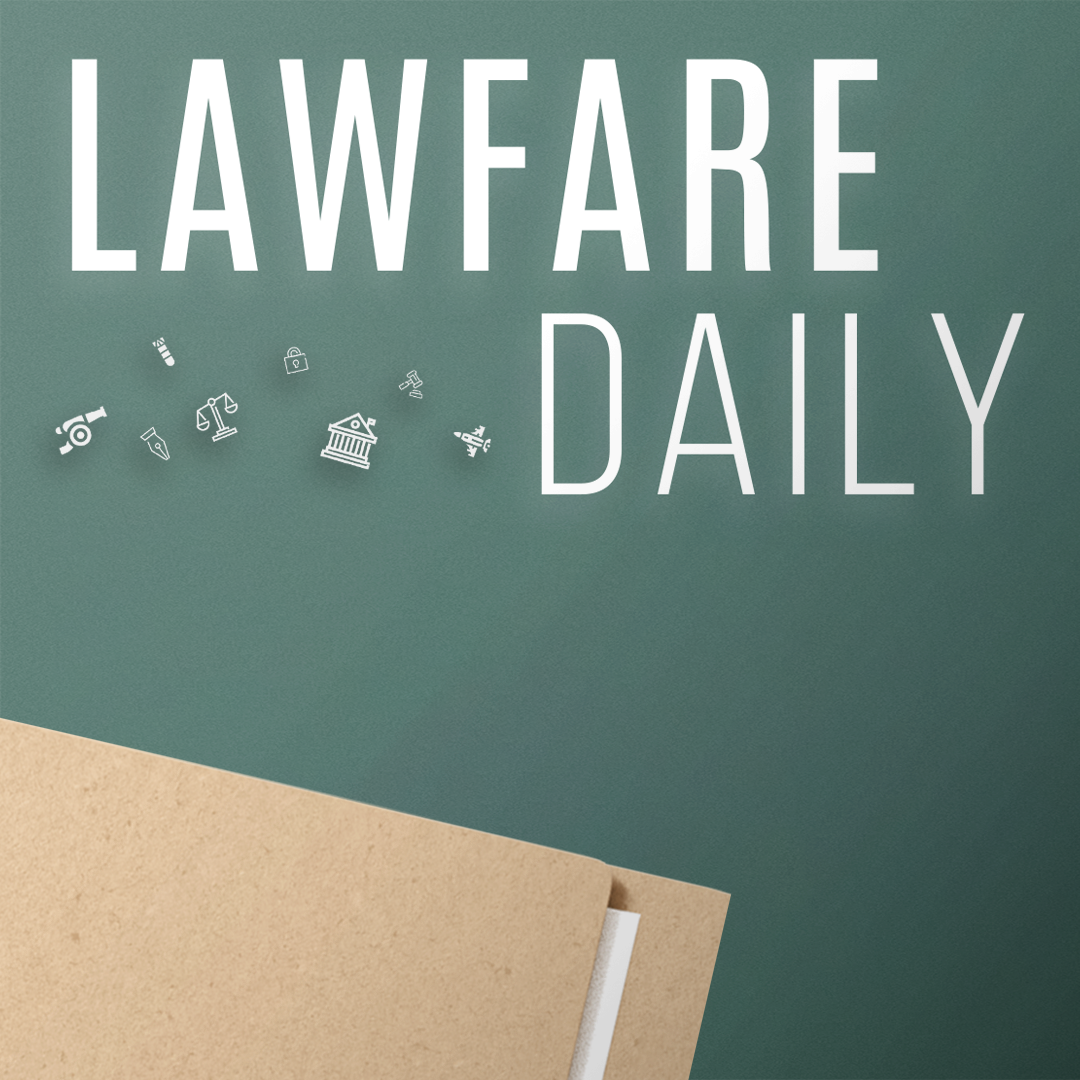What Europe and Non-Nuclear States Can Do to Reinforce Restraint on Nuclear Testing

Published by The Lawfare Institute
in Cooperation With

Editor’s Note: President Trump’s announcement that the United States will consider resuming nuclear testing shocked much of the world. My Center for Strategic and International Studies colleagues Astrid Chevreuil and Doreen Horschig argue that the resumption of testing would set back a range of nonproliferation objectives while offering little benefit to the United States. They contend that non-nuclear states as well as France and the United Kingdom, the two European nuclear states, should put pressure on China, Russia, and the United States not to resume testing and otherwise try to shore up nonproliferation norms.
Daniel Byman
***
President Trump’s recent announcement that the United States will return to testing nuclear weapons triggered widespread concern among nuclear weapons experts and countries around the world. Since then, experts have parsed his intent: whether he meant nuclear warheads or missiles, how the statement related to his meeting with Chinese President Xi Jinping, and whether Trump assumed that Russia and China have been testing their nuclear weapons all along. Even if some of his language was rhetorical, it carries real-world strategic consequences.
The United States, Russia, and China are now in a dangerous feedback loop that risks reigniting nuclear testing. This dynamic threatens to erode long-standing global norms against nuclear testing and intensify the broader nuclear arms race. To help break this cycle, Europe’s nuclear powers—France and the United Kingdom—should urge the three major nuclear powers to reaffirm their testing moratoria and commitments under the Comprehensive Nuclear-Test-Ban Treaty (CTBT). In parallel, non-nuclear states can use multilateral fora to apply collective diplomatic pressure, sustain funding for verification systems, and reinforce the political and normative barriers against a return to testing.
Mirroring Threats and the New Testing Dilemma
In recent years, nuclear powers have increasingly signaled their intentions to engage in nuclear testing, amplifying strategic tensions. In February 2023, Russian President Vladimir Putin announced that Russia would resume nuclear tests if the United States did, and that same year the James Martin Center for Nonproliferation reported heightened activity at Russia’s Novaya Zemlya nuclear test site. Since then, Russia has accused the United States of preparing the Nevada nuclear test site and has repeatedly issued conditional threats. For example, in December 2024, Deputy Foreign Minister Sergei Ryabkov warned that Moscow was considering steps to resume nuclear testing while cautioning then-President-elect Trump against doing so. Meanwhile, China has not publicly threatened nuclear testing, but open-source satellite imagery has shown increased activity at the Lop Nur test site. Earlier, in 2020, the U.S. State Department raised concerns about potential low-yield underground tests by China and Russia based on testing-site activity.
In technical terms, the benefits of renewed testing are limited—and the United States in particular has less to gain than any other nuclear power. The United States possesses advanced computational tools that ensure warhead reliability without explosive tests. Russia could benefit from testing new systems like hypersonic glide vehicles, but it would overall gain minimal technical advantage. China, however, stands to gain more, having conducted far fewer tests than Washington and Moscow overall. But these narrow technical incentives are outweighed by the political costs of breaking the testing taboo. The danger lies not in any single test but in the unraveling of mutual restraint that has held for nearly three decades.
No confirmed nuclear tests have occurred among the major powers, and evidence remains inconclusive regarding any new tests or active preparations. Yet the rhetoric and visible site activity have created a cycle of mutual suspicion that heightens the risk of escalation. North Korea remains the only state to have tested in the 21st century, but the major powers’ exchanges of accusations and conditional threats could push the global system closer to renewed testing.
The current dynamic represents a classic prisoner’s dilemma, incentivizing all sides to prepare even if none actually intended to test. Even if the United States, Russia, and China do not plan to return to nuclear testing, such distrust incentivizes precautionary preparations, which in turn reinforce the perception of imminent testing. This dynamic increases the likelihood of real-world preparations. The result is a self-reinforcing spiral that erodes confidence and intensifies nuclear competition.
Implications of an Erosion of the Testing Taboo
In its 29 years of existence, the CTBT has become one of the most enduring pillars of the global nonproliferation architecture. It has enabled nuclear-weapon states to fulfill part of their disarmament obligations; some, like France, have gone so far as to irreversibly dismantle their nuclear testing infrastructure. At the same time, the treaty has played a crucial role in curbing proliferation among non-nuclear-weapon states. Prior to the CTBT’s adoption, more than 2,000 nuclear tests had been conducted worldwide. Since then, only 10 tests—by India, Pakistan, and North Korea—have taken place, underscoring the strength of the de facto global moratorium that the treaty has helped establish.
The CTBT’s strength lies not only in its technical framework but also in the political confidence it fosters among states. Its rigorous verification regime and high degree of transparency have made it a cornerstone of mutual accountability in the nuclear order. The Preparatory Commission for the Comprehensive Nuclear-Test-Ban Treaty Organization (CTBTO) oversees the International Monitoring System, a global network of 321 monitoring stations and 16 laboratories capable of detecting, analyzing, and transmitting data in real time to Vienna and states parties. This system has provided governments with a shared, scientifically credible basis for assessing potential nuclear events, which is a rare source of trust in an increasingly contested strategic environment.
Yet the nuclear testing taboo is now entering one of its most fragile periods since the treaty’s adoption. For much of the past decade, only North Korea has been gearing up to conduct another test (its seventh), keeping alive a marginal but contained challenge to the norm. That changed in November 2023, when Russia withdrew its ratification of the CTBT, folding the move into its nuclear coercion toolkit to warn Western states against deepening support for Ukraine and to blur the line between nuclear rhetoric and conventional warfare. Historically, only states with few remaining diplomatic levers had dared to question the testing taboo: North Korea violated the norm to increase the credibility of its deterrent against its Asian neighbors and the United States, and Russia’s withdrawal from the CTBT was intended to force concessions in Ukraine. President Trump’s recent declaration, however, casts a shadow over three decades of bipartisan U.S. commitment to uphold the testing moratorium as a cornerstone of its nonproliferation policy.
This shift carries two serious risks. First, it may embolden states already skeptical of international norms to further distance themselves from them. Second, the potential loss of U.S. political and financial backing of the CTBTO—which covers roughly 20 percent of the organization’s budget—could weaken the organization’s capacity to sustain the accountability system that underpins the treaty’s credibility.
What European Nuclear Powers and Non-Nuclear States Can Do
As the spiral of mutual suspicion among nuclear powers threatens to undo decades of restraint, European nuclear powers and non-nuclear states have avenues to defend the nuclear testing taboo before it unravels further.
Europe’s nuclear powers, France and the United Kingdom, are uniquely positioned to uphold the testing moratorium. Sitting alongside the United States, Russia, and China within the P5 framework, they can use their diplomatic weight to encourage restraint in the lead-up to the next NPT Review Conference, which will start in April 2026. Both Paris and London have strong compliance records, including the irreversible dismantlement of their testing infrastructure, and retain independent strategic credibility. While their leverage may be limited, they can nonetheless lead by example: reaffirming their own commitments to the CTBT, coordinating with European partners, and publicly advocating for the preservation of the testing moratorium.
A coordinated initiative urging the United States, Russia, and China to jointly ratify the CTBT could help lower political costs for each and prevent further erosion of the norm. France and the United Kingdom’s active engagement could also prove valuable if Washington seeks to use the testing issue as leverage to promote a trilateral framework for regulating the arsenals of the major nuclear powers. Finally, ensuring that all P5 members meet or exceed their financial contributions to the CTBTO would demonstrate collective responsibility and help preserve the organization’s technical and political capacity.
Non-nuclear-weapon states also have a vital, complementary role in sustaining the treaty. Through the NPT review process, the UN General Assembly, and other multilateral platforms, they can exert collective political and normative pressure to encourage restraint and hold nuclear powers accountable. Highlighting the civil and scientific applications of the International Monitoring System, such as earthquake detection, as well as the capacity-building and training opportunities it offers can broaden support for the treaty. Underscoring these shared benefits can help maintain the support of countries that see nuclear restraint as inseparable from equitable access to peaceful nuclear technologies.
Collective pressure matters. The CTBT’s authority rests not only on the major powers but also on a wide network of states committed to mutual accountability. After all, 187 states have signed the treaty and 178 have ratified it; it has universal support among EU member states and in Latin America and the Caribbean. It is a reminder that consistent, coordinated diplomacy can still yield results. The more states reaffirm their commitment to the CTBT, the harder it becomes for any one power to break the testing taboo without facing broad international backlash.
A Closing Window for Restraint
The cycle of nuclear testing threats risks becoming self-fulfilling, turning rhetoric into reality and shattering one of the last barriers to nuclear escalation. Once one major power—Russia, China, or the United States—crosses that line, others will almost certainly follow, ending nearly three decades of restraint.
Europe and non-nuclear states still have time to act, but the window is closing fast. They should lead now by amplifying diplomatic pressure, sustaining the CTBTO’s verification system, and mobilizing political coalitions to defend the CTBT as a foundation of global security. Whether the world preserves it or lets it unravel will depend on Washington, Moscow, and Beijing but also on the collective resolve of those still committed to restraint.






